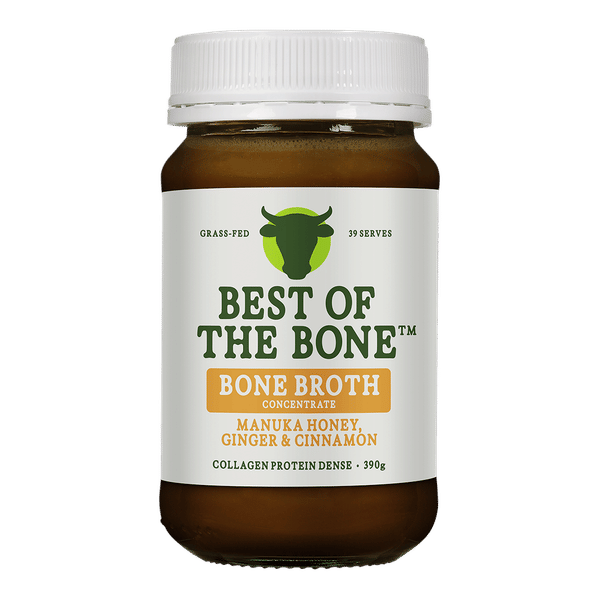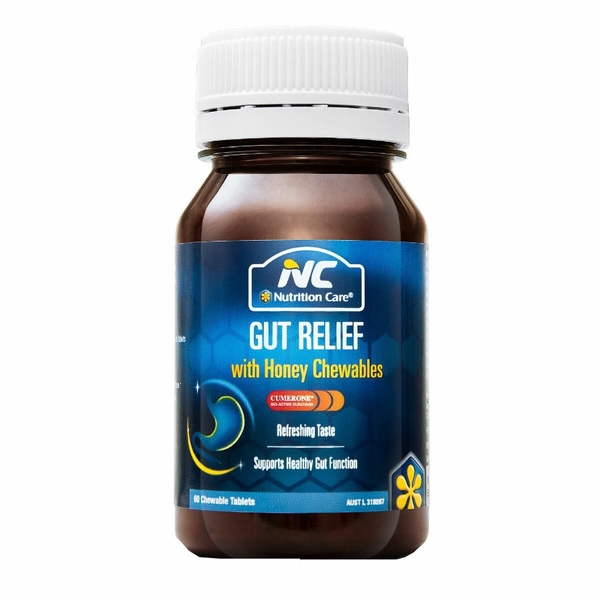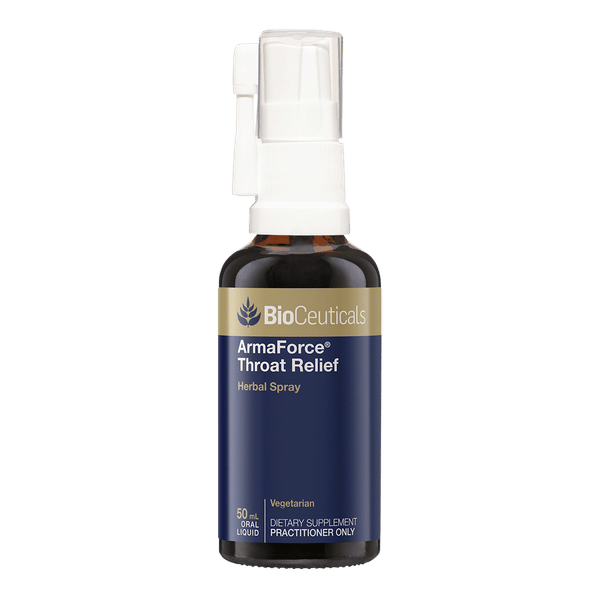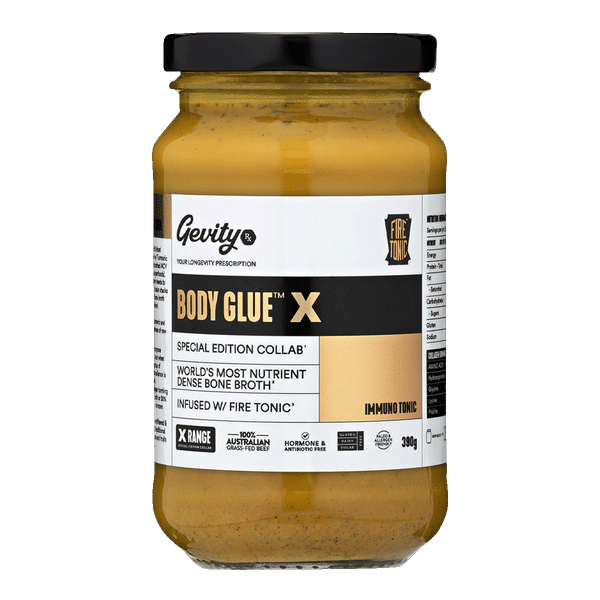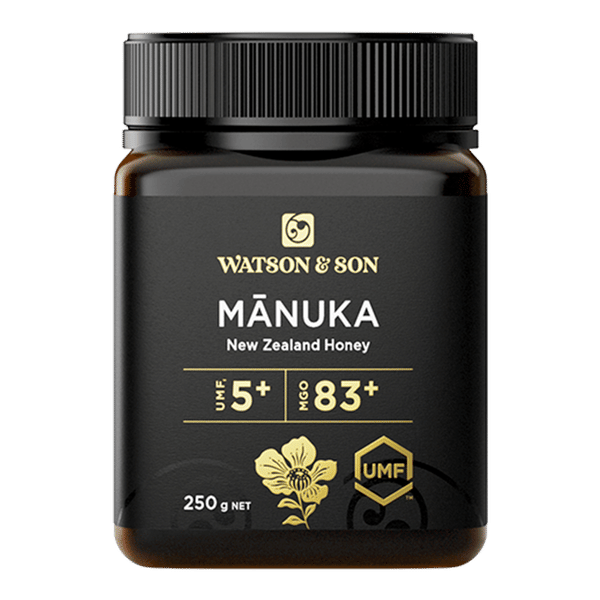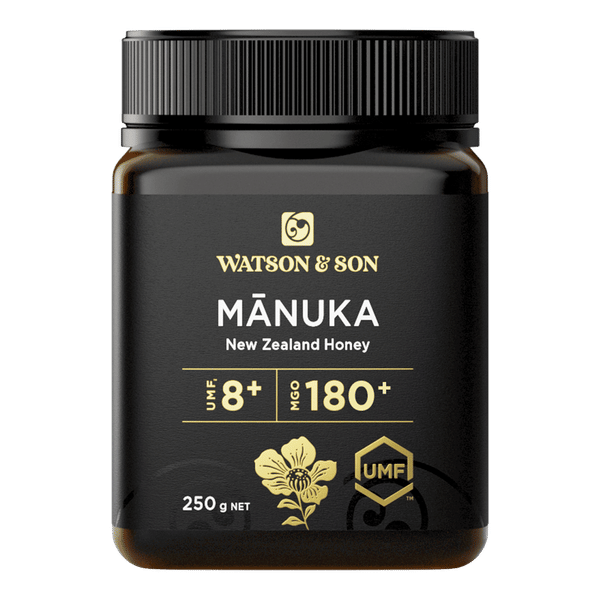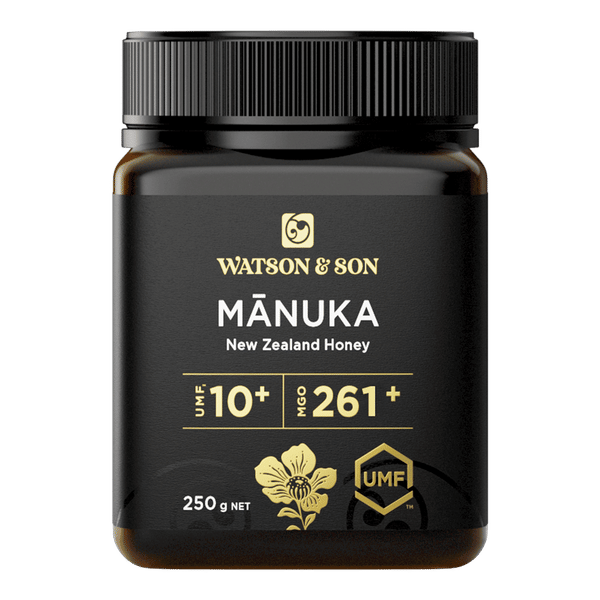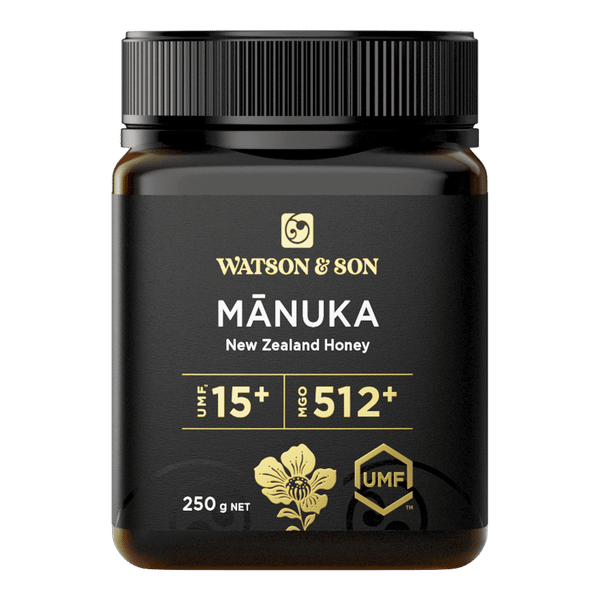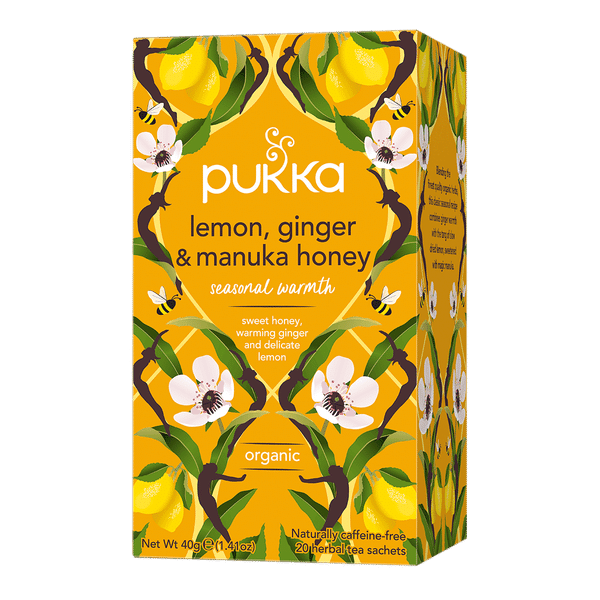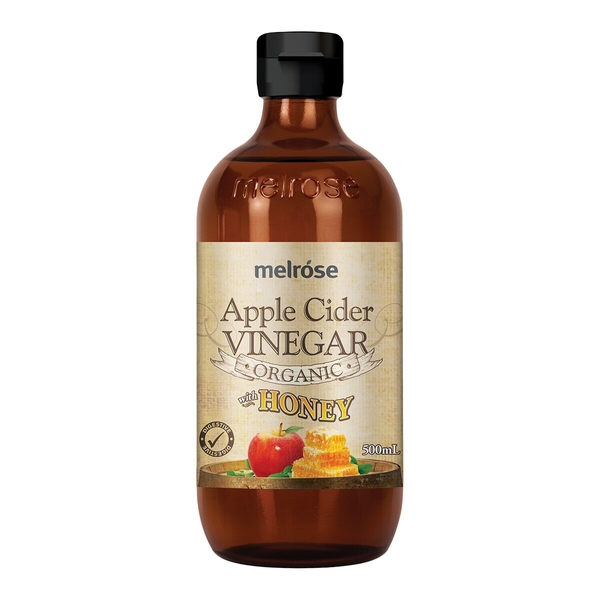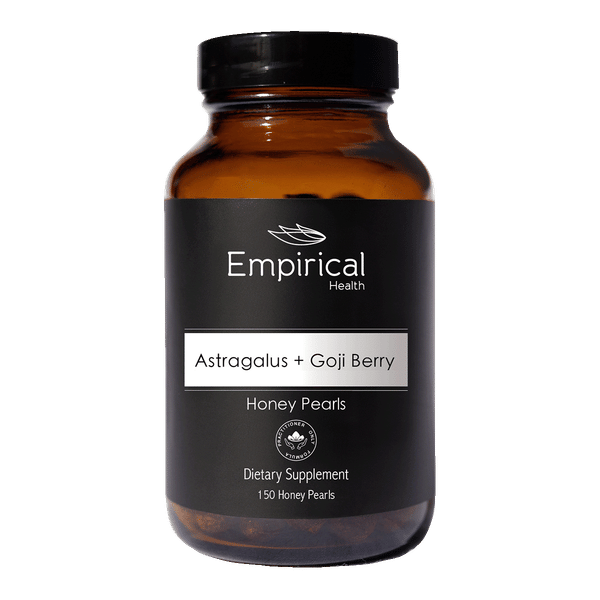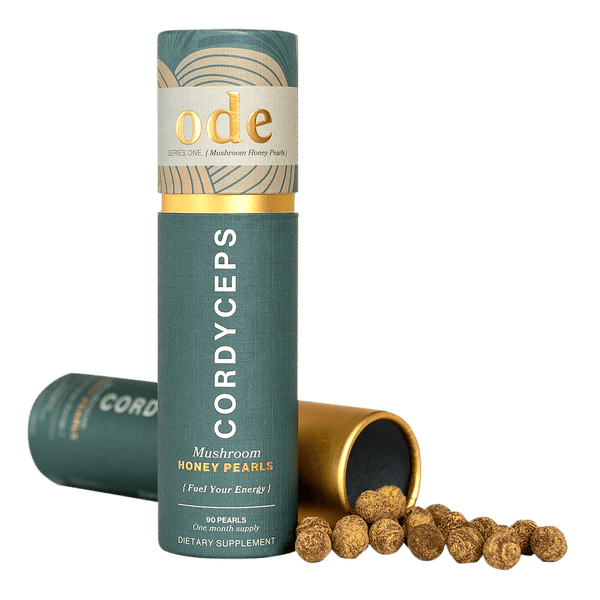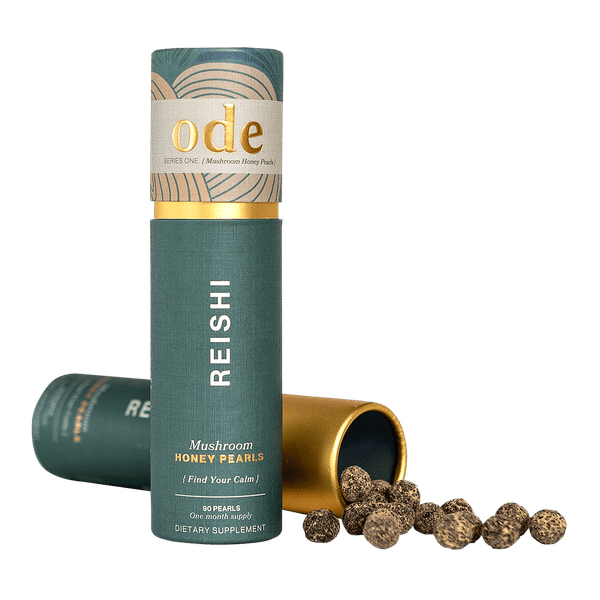
Honey
Alternate names: Beri honey, Blossom Honey, Buckwheat Honey, Chestnut Honey, Clarified Honey, Honeydew Honey, Honig, Jellybush Honey, Langnese Honey, Madhu, Manuka Honey, Medihoney, Mel, Miel, Miel Blanc, Miel Clarifié, Miel de Châtaignier, Miel de Manuka, Miel de Sarrasin, Miel Filtré, Purified Honey, Strained Honey, Tualang Honey, Wildflower and Thyme Honey
Actions: Anti-inflammatory, Antimicrobial, Antioxidant properties, Antitumor activity, Antitussive, Hormonal, Hypoglycemic, Wound healing
Background
Honey is a thick, sweet fluid produced by bees from plant nectars. It is commonly used as a sweetener in food, but should be avoided in infants.
Some chemicals in honey might kill certain bacteria and fungus. When applied to the skin, honey might serve as a barrier to moisture and keep skin from sticking to wound dressings. It might also provide nutrients and chemicals that speed wound healing. But honey can become contaminated with germs during production. Although rare, some infants have gotten botulism from taking honey by mouth.
People commonly use honey for burns, wound healing, swelling and sores inside the mouth, and cough. It is also used for many other conditions but there is no good scientific evidence to support most of these other uses. There is also no good evidence to support using honey for COVID-19.
Don't confuse honey with bee pollen, bee venom, or royal jelly, which are other types of bee products.
Some chemicals in honey might kill certain bacteria and fungus. When applied to the skin, honey might serve as a barrier to moisture and keep skin from sticking to wound dressings. It might also provide nutrients and chemicals that speed wound healing. But honey can become contaminated with germs during production. Although rare, some infants have gotten botulism from taking honey by mouth.
People commonly use honey for burns, wound healing, swelling and sores inside the mouth, and cough. It is also used for many other conditions but there is no good scientific evidence to support most of these other uses. There is also no good evidence to support using honey for COVID-19.
Don't confuse honey with bee pollen, bee venom, or royal jelly, which are other types of bee products.
Safety Safety definitions
When taken by mouth: Honey is likely safe for most adults. But when honey is produced from the nectar of rhododendrons, it is likely unsafe. This type of honey contains a toxin that may cause heart problems, low blood pressure, and chest pain.
When applied to the skin or on the inside of the mouth: Honey is likely safe for most adults.
When applied into the eye: It is possibly safe to use specific eye drops containing manuka honey (Optimel Manuka Plus Eye Drops; Melcare, Biomedical Pty Ltd). These eye drops are usually applied into the eyes 2-3 times daily for up to 4 weeks.
When applied into the nose: Diluted manuka honey solution is possibly safe for most adults when sprayed into the nose for up to 2 weeks.
Children: Honey is likely safe when taken by mouth in children who are at least one year old. Honey is possibly unsafe when taken by mouth by children less than 12 months old. Do not use honey in infants under 12 months old. Botulism poisoning is a risk at this age. But this is not a danger for older children or adults.
Diabetes: Using large amounts of honey might increase blood sugar levels in people with type 2 diabetes. Honey contains sugar and should be used in moderation.
Pollen allergies: Avoid honey if you are allergic to pollen. Honey, which is made from pollen, may cause allergic reactions.
When applied to the skin or on the inside of the mouth: Honey is likely safe for most adults.
When applied into the eye: It is possibly safe to use specific eye drops containing manuka honey (Optimel Manuka Plus Eye Drops; Melcare, Biomedical Pty Ltd). These eye drops are usually applied into the eyes 2-3 times daily for up to 4 weeks.
When applied into the nose: Diluted manuka honey solution is possibly safe for most adults when sprayed into the nose for up to 2 weeks.
Special Precautions & Warnings:
Pregnancy and breast-feeding: Honey is likely safe when taken in food amounts. But there isn't enough reliable information to know if it is safe to use honey in medicinal amounts when pregnant or breast-feeding. Stay on the safe side and stick to the amounts found in foods.Children: Honey is likely safe when taken by mouth in children who are at least one year old. Honey is possibly unsafe when taken by mouth by children less than 12 months old. Do not use honey in infants under 12 months old. Botulism poisoning is a risk at this age. But this is not a danger for older children or adults.
Diabetes: Using large amounts of honey might increase blood sugar levels in people with type 2 diabetes. Honey contains sugar and should be used in moderation.
Pollen allergies: Avoid honey if you are allergic to pollen. Honey, which is made from pollen, may cause allergic reactions.
Effectiveness
NatMed Pro rates effectiveness based on scientific evidence according to the following scale: Effective, Likely Effective, Possibly Effective, Possibly Ineffective, Likely Ineffective, Ineffective, and Insufficient Evidence to Rate.
Possibly effective Effectiveness definitions
- Burns. Applying honey preparations directly to burns seems to improve healing.
- Cough. Taking a small amount of honey by mouth at bedtime appears to reduce coughing spells in children aged 2 years and older. Honey appears to be at least as effective as the cough medicine dextromethorphan. But it is not clear if honey reduces cough in adults.
- Foot sores in people with diabetes. Applying dressings containing honey to diabetic foot ulcers seems to reduce healing time and prevent the need for antibiotics.
- Dry eye. Using specific honey eye drops or eye gel in the eyes (Optimel Manuka plus eye drops or Optimel Antibacterial Manuka Eye Gel) helps to make dry eyes feel better. These products can be used along with regular dry eye treatment such as lubricant drops and warm cloths on the eyes.
- Cold sores (herpes labialis). Applying honey to cold sores seems to improve healing time.
- Sores and ulcers of the mouth and gums caused by herpes virus (herpetic gingivostomatitis). Rinsing the mouth and then slowly swallowing honey helps these sores and ulcers heal faster in children who are taking a medication called acyclovir.
- Swelling (inflammation) and sores inside the mouth (oral mucositis). Rinsing the mouth and then slowly swallowing honey before and after chemotherapy or radiation therapy sessions seems to reduce the risk of developing mouth sores.
- A skin condition that causes redness on the face (rosacea). Applying a topical honey product to the skin might improve symptoms of rosacea.
- Wound healing. Applying honey preparations directly to wounds or using dressings containing honey seems to improve healing. Honey seems to reduce odors and pus, help clean the wound, reduce infection, reduce pain, and decrease time to healing.
Possibly ineffective Effectiveness definitions
- Acne. Applying honey to the face doesn't help treat acne.
- High levels of cholesterol or other fats (lipids) in the blood (hyperlipidemia). Taking honey by mouth does not seem to reduce lipid levels in people with high cholesterol.
- Swelling (inflammation) of the nasal cavity and sinuses (rhinosinusitis). Using honey in a nasal spray doesn't help improve symptoms in people who have frequent sinus infections.
Dosing & administration
Honey has most often been used by adults in doses of 35-75 grams by mouth daily for 1-4 weeks. It's been applied to the skin directly and in creams, dressings, and gauzes. Honey has also been applied to the eye in the form of eye creams, gels, and drops. Speak with a healthcare provider to find out what type of product and dose might be best for a specific condition.
Interactions with pharmaceuticals
Medications changed by the liver (Cytochrome P450 3A4 (CYP3A4) substrates)
Interaction Rating=Minor Be watchful with this combination.
Some medications are changed and broken down by the liver. Honey might change how quickly the liver breaks down these medications. This could change the effects and side effects of these medications.
Medications that slow blood clotting (Anticoagulant / Antiplatelet drugs)
Interaction Rating=Moderate Be cautious with this combination.
Honey might slow blood clotting. Taking honey along with medications that also slow blood clotting might increase the risk of bruising and bleeding.
Phenytoin (Dilantin)
Interaction Rating=Moderate Be cautious with this combination.
Honey might increase how much phenytoin the body absorbs. Taking honey along with phenytoin might increase the effects and side effects of phenytoin.
Interactions with herbs & supplements
Herbs and supplements that might slow blood clotting: Honey might slow blood clotting and increase the risk of bleeding. Taking it with other supplements with similar effects might increase the risk of bleeding in some people. Examples of supplements with this effect include garlic, ginger, ginkgo, nattokinase, and Panax ginseng.
Interactions with foods
There are no known interactions with foods.
Products
View all productsPer 10 g (Manuka Honey, Ginger & Cinnamon):
390 g Manuka Honey, Ginger & Cinnamon
RRP: $33.99$30.59Save: 10%
Create account
$29.95
Create account
Practitioner product
Per 36 g (Wild Berry):
- Honey (powder)
- Magnesium aspartate
- Sodium citrate
- Potassium aspartate
- Calcium citrate
- Glucose monohydrate (Dextrose)
- Maltodextrin
- Rice amylopectin
- Beta vulgaris powder
- Citrulline malate amino acid (L-Citrulline)
- Beta alanine
- Silicon dioxide
- Raspberry flavour
- Creatinol-O-Phosphate (Creatine)
- Malic acid
- Schisandra chinensis (berry) ext.
- Trimethylglycine (TMG)
- Stevia rebaubiana
RRP: $79.95$71.95Save: 10%
Create account
Per 10 g (X Immuno Tonic):
- Honey
- Beef bones
- Sea salt
- Curcuma longa
- Piper nigrum
- Chilli powder
- Apple cider vinegar
- Allium sativum
- Armoracia rusticana
- Zingiber officinale
- Daucus carota powder (Carrot)
- Apium graveolens
- Allium cepa
- Malus (Apple)
- Orange
- Citrus limon (Lemon)
- Brassica juncea
- Petroselinum crispum
- Rosmarinus officinalis
- Thymus vulgaris
- Juniperus communis (berry)
- Bay leaf
- Szechuan pepper
- Backhousia citriodora
- Pink Himalayan crystal salt
- Origanum vulgare (Oregano)
390 g X Immuno Tonic
RRP: $39.00$33.15Save: 15%
Create account
RRP: $29.95$23.36Save: 22%
Create account
RRP: $38.14$29.75Save: 22%
Create account
RRP: $48.14$37.55Save: 22%
Create account
RRP: $77.23$60.24Save: 22%
Create account
RRP: $139.05$108.46Save: 22%
Create account
RRP: $13.95$10.88Save: 22%
Create account
Per lozenge:
- Leptospermum scoparium (Manuka honey) 2.32 g
- Citrus limon (Lemon) 196 mg
- Maltodextrin 280 mg
RRP: $13.95$10.88Save: 22%
Create account
Per tea bag:
RRP: $10.25$9.43Save: 8%
Create account
RRP: $19.99$14.80Save: 26%
Create account
Practitioner product
vital.ly has licensed monographs from TRC Healthcare.
This monograph was last reviewed on 16/01/2025 11:00:00 and last updated on 12/03/2023 07:07:36. Monographs are reviewed and/or updated multiple times per month and at least once per year.
Natural Medicines disclaims any responsibility related to medical consequences of using any medical product. Effort is made to ensure that the information contained in this monograph is accurate at the time it was published. Consumers and medical professionals who consult this monograph are cautioned that any medical or product related decision is the sole responsibility of the consumer and/or the health care professional. A legal License Agreement sets limitations on downloading, storing, or printing content from this Database. No reproduction of this monograph or any content from this Database is permitted without written permission from the publisher. It is unlawful to download, store, or distribute content from this site.

